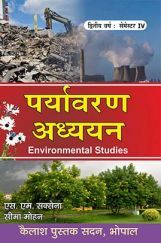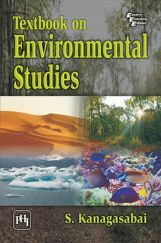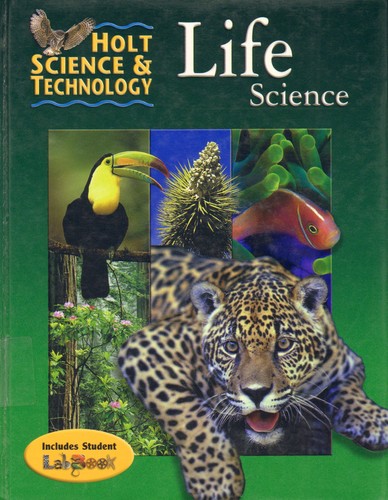Environmental Science Online Textbook Pdf
Download full-text PDF. The book Introduction to Environmental. Join ResearchGate to discover and stay up-to-date with the latest research from leading experts in Environmental Science. Introduction to Environmental Science Chapter 1: Science and the Environment Environmental Science: Holt pages 4-30. Below you find the classroom assignments and PPT's used for Chapter 1, Science and the Environment. You may use this website for access to PPT's, guided notes, and make up assignments.
Book Detail: Environmental Science
Language: English
Pages: 210
Author: TNAU
Price: Free
Course outlines: Environmental Science
- Scope and Importance of Environmental Studies
- Natural resources: Renewable and Non renewable resources. Land and Water
- Natural resources: forest, wildlife, energy and food resources
- Ecosystems: Definition, concept, structure and functions
- Producers, consumers and decomposers of an ecosystem. Energy flow in the ecosystem. Types of ecosystems
- Bio-diversity: Definition, classification, threats to biodiversity and its conservation
- Environmental pollution: Causes, effects and control of air
- Global warming and climate change
- Causes, effects and control of water and marine pollution
- Causes, effects and control of soil pollution
- Causes, effects and control of noise and thermal pollution
- Causes, effects and management of nuclear hazards and industrial wastes
- Disaster management, Floods, earthquakes, cyclones and land slides
- Social issues and the environment, unsustainable to sustainable development

- The Environment Protection Act, the Air Act, the water Act, the Wildlife Protection Act and Forest Conservation Act
- National and state level organizations – Environmental Laws and Acts – Environmental Education – CDM
- Woman and child welfare, HIV/AIDS and Role of information technology on environment and human health.
Feedback: After Reading these ICAR eCourse, please give your feedback for improve of the e-Course contents on this website. Click Here
Disclaimer: The information on this website does not warrant or assume any legal liability or responsibility for the accuracy, completeness or usefulness of the courseware contents.
The contents are provided free for noncommercial purpose such as teaching, training, research, extension and self learning.
If you are facing any Problem than fill form Contact Us
If you want share any article related Agriculture with us than send at info@agrimoon.com with your contact detail.
60,459 total views, 50 views today
Book Detail:Environmental Science
Language: English
Pages: 319
Author: Dr. M. PRASANTHRAJAN

Price: Free
Outlines for Environmental Science
- Introduction, definition, scope and importance of environmental studies. Environment – definition and importance
- Components of environment – structure of earth – different spheres of earth -atmosphere, hydrosphere, lithosphere, biosphere : Introduction and definition
- Biogeochemical cycles – Importance
- Air environment – Structure, composition and importance of different layers of atmosphere
- Water environment – classification – freshwater, importance, availability, components, zones, biotic and abiotic interaction
- Marine water – importance, availability, components, zones, biotic and abiotic interaction
- Global and Indian environment – past and present status
- Environmental pollution – definition, types of pollution, pollutant, types of pollutants
- Air pollution , major air pollutants, source, effect and control measures
- Criteria air pollutants, air quality index (AQI), National ambient air quality standards. Important air pollution events
- Water pollution, source, effect and control measures, water quality standards, eutrophication
- Soil pollution, source, effect and control measures
- Noise pollution, source, effect and control measures
- Impact of different pollution on human, organism and environment
- Food contaminants, preservatives, artificial colours, source, effects and regulations
- Smog – definition – classification – particulate pollution – brown air smog (photochemical smog), gray air smog (industrial smog) formation and chemistry
- Mid semester examination
- Acid rain – source, formation, effect and control measures
- Global warming: global warning – green house effect – green house gases – latest developments – effect and control measures
- Ozone layer – importance, ozone formation and depletion, ozone depleting substances, chemistry and control measures
- Biomagnification – introduction, definition, process and control
- Sewage water source, characteristics, sewage treatment process
- Hazardous waste – handling and management – incineration, pyrolysis and other hazardous waste management practices
- Deforestation – forms, causes – Consequences of Deforestation, conservation strategy
- Role of central pollution control board in pollution prevention and control
- Prevention and control of pollution – technological and sociological measures and solution, Indian and global efforts. Environmental act, law, policy and legislation in India.
- Environment Protection Act, Air (Prevention and Control of Pollution ) act, Water (Prevention and Control of Pollution ) act, Wildlife protection act, Forest conservation act
- International voluntary agencies mandates and activities in environmental conservation – Indian voluntary agencies mandates and activities in environmental conservation
- Important global treaties, agreements & conventions on the environment
- International conferences, convention and summits – major achievements of Montreal protocol, Earth summit
- Kyoto protocol, Emission trading, CDM, Copenhagen summit – over view
- Environmental impact assessment – Over view
- Socio economic factors responsible for environmental degradation
- Human population growth and life style. Environmental education and awareness: overview
Practical
- Visit to near by water (pond/river) ecosystem to study biotic and abiotic components
- Documentation of biotic and abiotic components of pond/river ecosystem
- Estimation of Dissolved oxygen content of river/pond water
- Estimation of Biological Oxygen Demand of river/pond water
- Study of Bioindicators of pond/river ecosystem
- Visit to nearby terrestrial (forest) ecosystem to study biotic and abiotic components
- Estimation of organic carbon content of forest/grassland soil
- Visit to nearby grassland ecosystem to study biotic and abiotic components
- Study of population indices of a grassland ecosystem
- Study of pollution indicator plants, insects, birds and animals
- Visit to nearby industry to study pollution abatement techniques
- Collection, processing and storage of industrial effluent samples
- Analysis of temporary and total hardness of effluent sample by titration
- Estimation of Chlorides in effluent sample
- Determination of total dissolved solids (TDS) in effluent samples
- Determination of Chemical Oxygen Demand (COD) in effluent sample
- Practical examination
Feedback: After Reading these ICAR eCourse, please give your feedback for improve of the e-Course contents on this website. Click Here
Disclaimer: The information on this website does not warrant or assume any legal liability or responsibility for the accuracy, completeness or usefulness of the courseware contents.
The contents are provided free for noncommercial purpose such as teaching, training, research, extension and self learning.
If you are facing any Problem than fill form Contact Us

Environmental Science Online Textbook Pdf Free
If you want share any article related Agriculture with us than send at info@agrimoon.com with your contact detail.
Environmental Science Online Textbook Pdf Format
27,030 total views, 28 views today